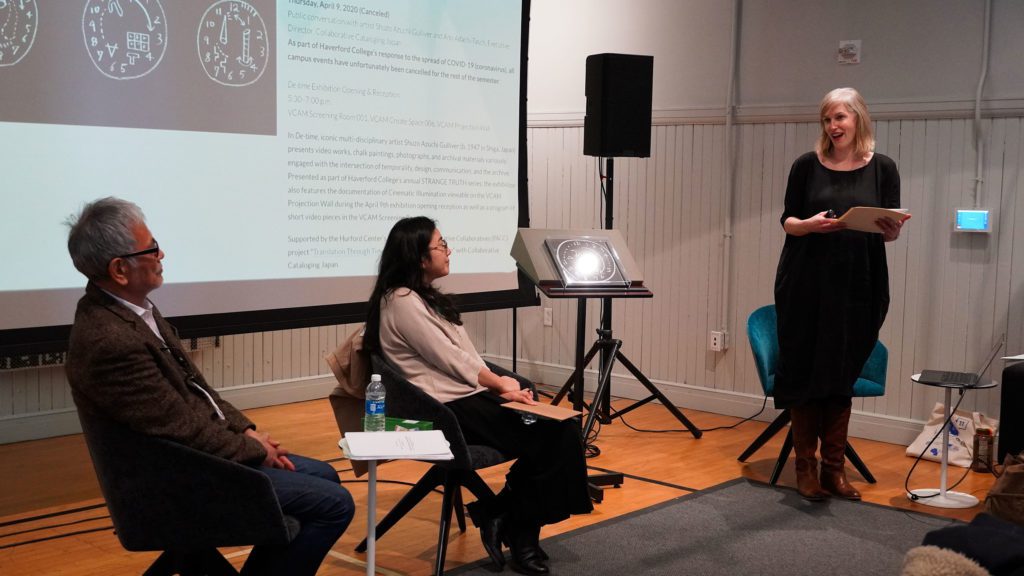In April 2020, artist Shuzo Azuchi Gulliver was set to present his multimedia exhibition De-Time at Haverford as part of the College’s Strange Truth film series. However, due to the incredibly unfortunate timing of the COVID-19 pandemic, Gulliver and his work—which included video, chalk paintings, photographs, and archival materials—never made it to campus, a difficult decision for everyone involved after months of planning. However, Haverford was able to purchase a work Gulliver had created specifically for the exhibition, a painting titled De-Time #1, 2020 that is now part of Quaker and Special Collections.
Gulliver (a nickname he picked up as a teenager) finally made it to campus on February 8, for an artist talk and collaborative workshop in VCAM, where he discussed his career path, past work, current exhibitions, and future plans.
Gulliver spent his early years as an artist staging street performances and outdoor “happenings,”and grew to be an icon of the 1960s counterculture in Japan. He became known for staging what have been called “moving-image events,” such as Cinematic Illumination (1968–69), which used 18 slide projectors to beam 1,500 slides in a Tokyo discotheque. Gulliver later went on to explore sculpture, painting, installation, and new media. His work has been presented all over the world, including at venues such as the Tate Modern in London, the Tokyo Photographic Art Museum, and the Museum of Modern Art in New York.
Gulliver’s February talk and workshop marked his first return to campus since 2019, when he participated in the Mellon-funded Philadelphia Area Creative Collaborative project, Translation Through Time, for which he served as the lead artist.. This time, he was here to reflect on De-Time, particularly De-Time #1, 2020.
In his talk, Gulliver described how he began creating the series in the 1980s, and continues it to this day. The project engages with intersections of temporality, design, communication, and the archive. As part of his collaborative workshop he challenged students in Professor Kimiko Suzuki’s Third Year Japanese class and Professor Erin Schoneveld’s Modern and Contemporary East Asian Art by asking, “What is time?” and “What is de-time?” Students responded by creating visual and textual representations of their answers to his questions, inspired by his own artwork. These smaller works of art will be on display in Lutnick Library, along with Gulliver’s own De-Time #1, 2020.
He also discussed some of his present work, including his current Los Angeles solo exhibition, Synogenesis, his first on the West Coast. The exhibit encompasses works of many different media, all depicting structures necessary for our everyday life. This includes our physical bodies, sound, symbols, and even time.
Professor Schoneveld, professor of East Asian Languages and Cultures (EALC) and visual studies and Director of visual studies, co-hosted the event with Professor Suzuki, lecturer in Japanese (also EALC). She thanked the East Asian Languages and Cultures Department, the Agnes Chen Fund, and the Distinguished Visitors Program for sponsoring the event.





